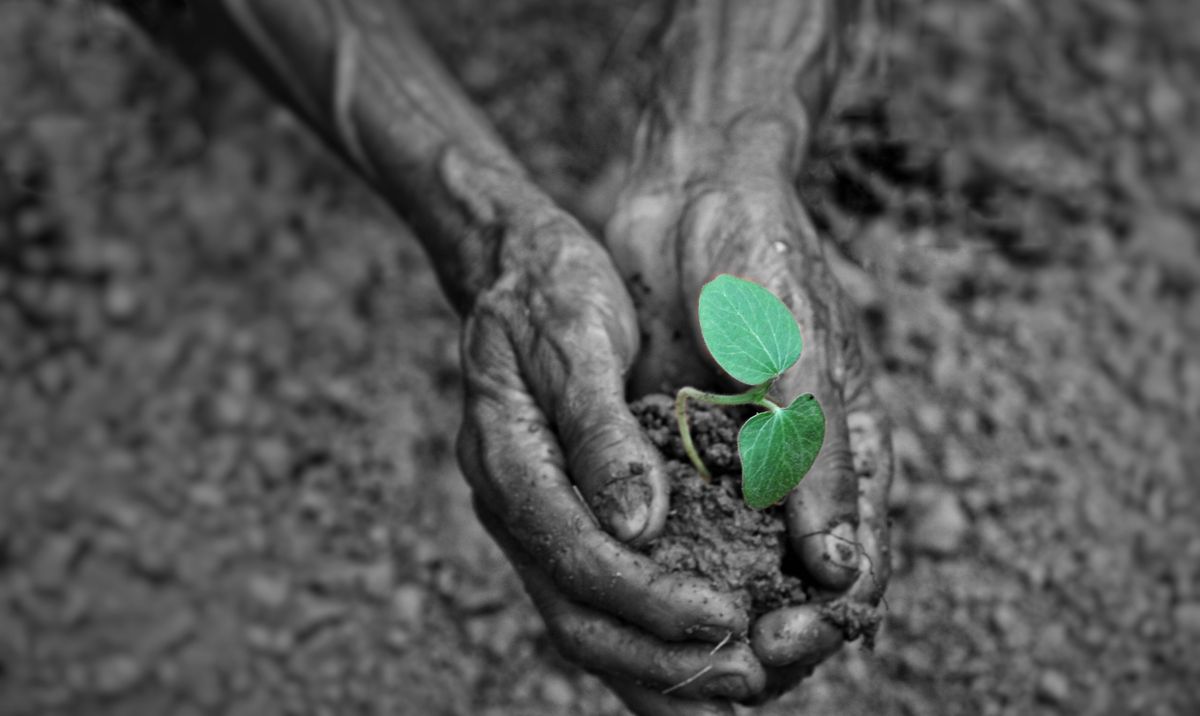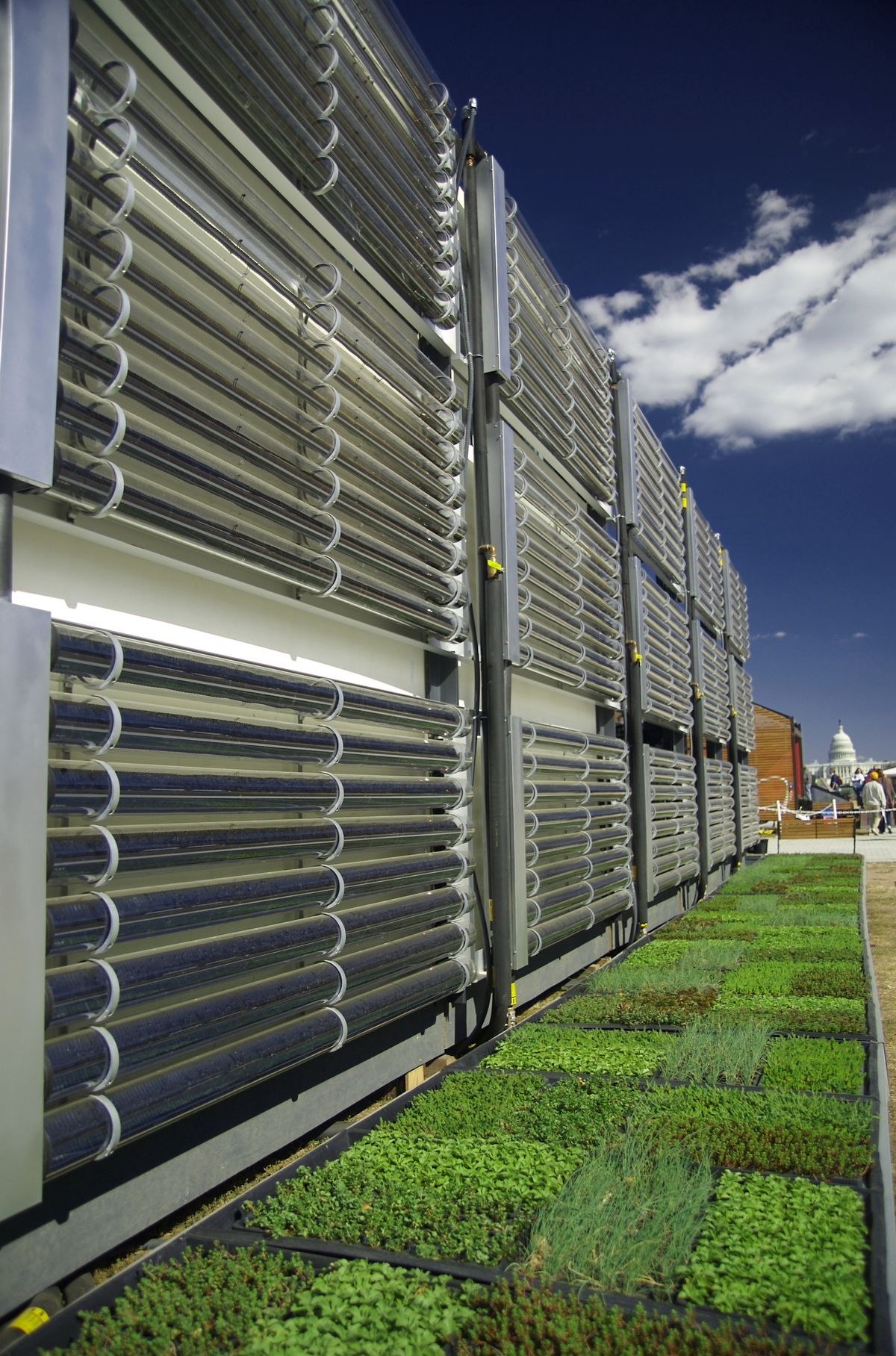Horticulture is at the crossroads of environmental stewardship and economic sustainability, navigating the delicate balance between conserving resources and supporting farmers’ livelihoods.
This article explores the intersection of sustainable practices, economic viability, biodiversity, career opportunities, and the challenges and future directions within the field of horticulture. It delves into how horticulture can contribute to reconciliation ecology by integrating biodiversity into human landscapes and the role technology plays in adopting environmentally-focused practices for a sustainable future.
Table of Contents
Key Takeaways
- Sustainable horticulture practices prioritize pollution mitigation, efficient production through strategic crop grouping, and biological disease management to minimize environmental impact while maintaining economic viability.
- Economic models in horticulture are evolving to incorporate environmental factors, balancing short-term yields with long-term resource conservation to ensure ‘forever’ sustainability.
- Reconciliation ecology in horticulture fosters biodiversity within agricultural landscapes, demonstrating how biodiversity-friendly farming practices can coexist with human activity.
- Career opportunities in sustainable horticulture are diverse, extending beyond plant-focused roles to include technology, education, and strategic business planning for resilience against interruptions.
- The future of horticulture faces challenges such as barriers to sustainable practices and ethical considerations, yet it is also marked by emerging trends in ecological and organic farming.
Sustainable Practices in Horticulture

Best Management Practices for Pollution Mitigation
Implementing best management practices (BMPs) is crucial for mitigating pollution in horticulture. These practices aim to address the various sources of nutrient pollution, such as fertilizer use, animal manure, and soil erosion, which, if not managed responsibly, can significantly harm the environment. Effective BMPs are not one-size-fits-all; they must be tailored to the specific context of each agricultural operation.
A combined set of BMPs is often necessary to tackle the different types of agricultural pollution effectively. For instance, contour farming and hedgerow field borders can work together to reduce diffuse pollution. The selection, placement, and timing of BMPs are vital to their success, and these decisions should be made with both economic and social considerations in mind.
The most effective BMPs balance pollutant reduction with total cost, ensuring that environmental benefits do not come at an unsustainable financial burden.
Evaluating the cost-effectiveness of various BMPs is essential. For example, stripcropping and residue management have been identified as particularly effective due to their higher sediment reduction capabilities. A strategic approach to BMP implementation can lead to significant improvements in water quality while also being economically viable.
Strategic Crop Grouping for Efficient Production
Strategic crop grouping is a cornerstone of sustainable horticulture, optimizing the use of resources and enhancing production efficiency. By grouping plants with similar environmental or cultural requirements, growers can create a harmonious ecosystem that supports the successful growth of diverse species. This approach not only conserves resources but also simplifies management practices.
Strategic crop grouping can ease spring greenhouse production concerns by addressing issues such as disease management and pest control in a more natural and integrated manner.
Intercropping, a form of strategic crop grouping, involves planting different crops in proximity to exploit their complementary characteristics. For example, the Three Sisters Garden, an indigenous method, combines corn, beans, and squash. The corn provides a structure for the beans to climb, the beans fix nitrogen in the soil, and the squash’s broad leaves help retain moisture and suppress weeds. This symbiotic planting strategy enhances biodiversity and reduces the need for chemical inputs.
Implementing strategic crop grouping requires careful planning and knowledge of plant interactions. The table below illustrates a simplified crop grouping scheme for a hypothetical greenhouse operation:
| Crop Group | Characteristics | Benefits |
|---|---|---|
| Group A: Leafy Greens | Similar water and shade needs | Efficient water use |
| Group B: Root Vegetables | Common pest predators | Natural pest control |
| Group C: Legumes | Nitrogen-fixing properties | Soil fertility improvement |
By mastering the mix of strategic crop groupings, horticulturists can achieve a balance between environmental stewardship and economic productivity.
Biological Approaches to Disease Management
In the realm of sustainable horticulture, biological approaches to disease management are gaining traction as a means to reduce reliance on chemical pesticides. These methods focus on understanding and manipulating the ecosystem to create unfavorable conditions for pathogens.
One such method is Anaerobic Soil Disinfestation (ASD), which involves the incorporation of organic matter into the soil followed by flooding and tarping to create anaerobic conditions. This process has shown promise in reducing soilborne disease damage, particularly in cut flower production.
By fostering a better understanding of pathogen biology, growers can implement targeted biological controls that are both effective and environmentally friendly.
While the initial investment in biological methods may be higher, the long-term benefits include improved soil health and reduced environmental impact. The table below outlines the comparative effectiveness of ASD against common soilborne pathogens:
| Pathogen | Control Method | Effectiveness |
|---|---|---|
| Pathogen A | ASD | High |
| Pathogen B | Chemical | Moderate |
| Pathogen C | ASD | Moderate |
Adopting biological approaches requires a shift in perspective, from reactive to proactive management of plant health. This shift is essential for the sustainability of horticultural practices.
Economic Viability and Environmental Responsibility

Balancing Short-term and Long-term Economic Goals
In the realm of horticulture, the pursuit of economic sustainability necessitates a delicate balance between immediate financial returns and the enduring health of agricultural systems. Short-term gains are often tempting, but without considering the long-term implications, such practices can lead to resource depletion and environmental degradation. Sustainable farming, as a response to agriculture’s current environmental and social challenges, offers a framework for this balance.
Triple bottom line frameworks have emerged as a tool to encapsulate this balance, incorporating social and environmental considerations alongside financial outcomes. Here’s how these dimensions can be integrated:
- Economic: Ensuring profitability and financial stability
- Social: Promoting fair labor practices and community benefits
- Environmental: Preserving ecosystems and biodiversity
The true measure of sustainable horticulture lies in its ability to harmonize economic activities with ecological integrity over time.
To achieve this, a shift in perspective is required. It’s not just about altering practices but also about redefining success. The clash between environmental ambitions and economic realities must be navigated with care, ensuring that the agricultural environments are designed for endless regeneration.
The Role of Technology in Sustainable Farming
The integration of technology in agriculture is pivotal for sustainable farming to meet the demands of a growing population. By adopting technological advancements, farmers can increase productivity while considering the environmental and community costs. Sustainable technology aims to reduce non-renewable inputs, especially those harmful to the environment, and to enhance natural agricultural processes like nutrient cycling and soil regeneration.
- The use of precision agriculture tools to optimize resource use and reduce waste.
- Implementation of renewable energy sources to power farm operations.
- Development of crop varieties better suited to withstand environmental stresses.
It is important to develop flexible business processes and farming practices that are resilient to environmental changes.
While some argue for a return to traditional methods, the consensus is that technology, when applied thoughtfully, can lead to more sustainable consumption and production. Local farming and community gardens are also recognized as steps towards a more sustainable agriculture system.
Economic Models Incorporating Environmental Factors
In the quest for sustainable horticulture, economic models are evolving to integrate environmental factors. These models aim to quantify the externalities such as ecosystem services and biodiversity, which traditional accounting systems often overlook. The inclusion of these factors is crucial for a comprehensive understanding of the true costs and benefits of sustainable practices.
Several initiatives, like The Economics of Ecosystems and Biodiversity study, have begun to address the economic implications of sustainable land management. They strive to balance the immediate financial costs with the long-term benefits of preserving natural capital.
Economic models that incorporate environmental factors are not just theoretical constructs; they are practical tools for decision-making. They help in identifying the socio-eco-efficiency and eco-effectiveness from three sustainability spheres.
The table below outlines some of the key components considered in these models:
| Component | Description |
|---|---|
| Ecosystem Services | Benefits provided by ecosystems such as pollination and water purification |
| Biodiversity | Variety of plant and animal life in a particular habitat |
| Land Degradation | Reduction in the productive capacity of the land |
| Sustainable Agriculture | Farming practices that maintain the productivity and usefulness of the land over time |
By incorporating these components, economic models can provide a more accurate representation of the long-term viability of horticultural practices.
Biodiversity and Reconciliation Ecology

Integrating Biodiversity into Agricultural Landscapes
The integration of biodiversity into agricultural landscapes is a critical step towards sustainable horticulture. Diverse farming practices are essential for maintaining the ecological balance and enhancing the resilience of food production systems. A study in Nature suggests that while no single practice boosts all taxonomic groups, overall less intensive agricultural practices are beneficial to biodiversity.
Incorporating biological and ecological processes such as nutrient cycling, soil regeneration, and nitrogen fixation is vital. These processes contribute to a self-sustaining ecosystem that supports a wide range of species. Crop genetic diversity is another key method that reduces risks associated with monoculture crops, making them more adaptable to a changing climate.
The adoption of ecological farming is not just about technology; it’s about understanding and working with nature’s complex systems to achieve a balance between productivity and conservation.
The table below outlines the key components of ecological farming that contribute to biodiversity:
| Component | Description |
|---|---|
| Nutrient Cycling | Ensures the continuous replenishment of soil nutrients. |
| Soil Regeneration | Promotes the health and fertility of the soil. |
| Nitrogen Fixation | Utilizes natural processes to enrich soil nitrogen content. |
| Crop Diversity | Encourages the planting of a variety of crops to prevent monoculture vulnerabilities. |
By embracing these components, farmers can create more robust and environmentally friendly agricultural systems.
Horticulture’s Contribution to Reconciliation Ecology
Horticulture plays a pivotal role in reconciliation ecology, which aims to integrate biodiversity into human-dominated landscapes. By adopting sustainable horticultural practices, we can create environments that support both human livelihood and ecological diversity. This dual focus on economic viability and environmental stewardship is essential for the long-term sustainability of agricultural systems.
Reconciliation ecology is not just a theoretical concept; it has practical applications in horticulture. For instance, the use of intercropping and companion planting can enhance biodiversity while also improving crop yields and resilience. These methods can help species adapt to environmental changes and provide a buffer against climate disruption.
The synergy between different plant species in an intercropping system exemplifies the essence of reconciliation ecology in horticulture.
Here are some benefits of horticultural practices that contribute to reconciliation ecology:
- They accommodate biodiversity within human landscapes.
- Sustainable practices have a lower carbon footprint compared to traditional methods.
- Long-term economic considerations are balanced with the need for resource conservation.
- Techniques like the Three Sisters Garden demonstrate how intercropping supports plant growth and pest management.
Case Studies of Biodiversity-Friendly Farming Practices
The integration of biodiversity into farming practices is not just a theoretical concept but a practical reality with numerous successful case studies. Ecological farming is one such practice that introduces symbiotic species to enhance ecological sustainability. Benefits include reduced ecological debt and the elimination of ecological dead zones, which are critical for maintaining a healthy environment.
Ecological farming is also a practical development aimed at creating sustainable land management systems. It emphasizes the importance of biodiversity in food production, which can lead to increased crop yields and resilience against pests and diseases. For instance, mixed farming has been shown to increase rice yield significantly, demonstrating the tangible benefits of biodiversity-friendly practices.
The challenge for farmers lies in balancing competition and profitability with ecological responsibility. Public policy, advertisements, and laws can play a pivotal role in incentivizing sustainable agriculture.
The table below showcases a comparison of traditional and ecological farming practices and their impact on rice yield:
| Farming Practice | Rice Yield (tons/ha) |
|---|---|
| Traditional | 3.5 |
| Ecological | 4.2 |
This data, drawn from real-world applications, illustrates the potential for ecological farming to not only support biodiversity but also to enhance agricultural productivity.
Career Opportunities in Sustainable Horticulture

Plant-Focused and Alternative Career Paths
The field of horticulture offers a diverse range of career opportunities that extend beyond the traditional plant-focused roles. Innovative positions in areas such as permaculture, landscape architecture, and urban horticulture are gaining traction, reflecting a shift towards more sustainable and ecological practices.
- Permaculture design
- Urban agriculture specialist
- Landscape restoration expert
- Horticultural therapy coordinator
Horticulture is not limited to the cultivation and care of plants; it also encompasses roles that require strategic planning and design to create systems that are both productive and environmentally friendly. For those passionate about integrating nature with human spaces, careers in landscape architecture can be particularly rewarding.
The integration of sustainable practices in horticulture is not just an environmental imperative but also a pathway to innovative and fulfilling careers.
With the rise of technology and a growing emphasis on sustainability, the sector is seeing an emergence of roles that cater to a new generation of horticulturists. These roles often require a blend of traditional knowledge and modern skills, emphasizing the importance of lifelong learning and adaptability in the field.
Education and Lifelong Learning in Horticulture
The field of horticulture is ever-evolving, with new practices and technologies continually emerging. Lifelong learning is essential for professionals to stay current and competitive. The American Horticultural Society recently launched a self-paced online course, marking a significant step towards accessible education in the field. This course provides a platform for individuals to deepen their understanding of horticulture’s rich culture and its practical applications.
To ensure a comprehensive educational journey, various resources are available:
- Online courses and webinars
- Workshops and hands-on training
- Academic degrees and certifications
- Industry magazines and newsletters
Embracing a culture of continuous learning is not just beneficial; it’s imperative for success in the dynamic world of horticulture.
Whether you’re a seasoned professional or a newcomer, the opportunities for growth are boundless. From traditional plant-focused roles to alternative career paths, education paves the way for innovation and resilience in the industry.
Preparing for Business Interruptions in Greenhouse Operations
In the dynamic world of horticulture, greenhouse operations are susceptible to various forms of business interruptions. These disruptions can stem from natural disasters, supply chain issues, or even technological failures. To mitigate the impact on reputation, customer retention, and cash flow, it is essential to develop a Business Continuity Plan (BCP).
A robust BCP should outline the steps to take before, during, and after an interruption. Key components include:
- Identification of critical operations and essential staff
- Communication strategies to keep employees and customers informed
- Backup systems for power, water, and other vital resources
- Procedures for data backup and recovery
Sharing the BCP with all levels of staff is crucial. Regular training and drills can ensure everyone is prepared to act swiftly and effectively in the event of an interruption.
Finally, staying informed about the latest trends and technologies can provide additional strategies for resilience. For instance, the integration of drones for monitoring and the use of advanced software for operational management can enhance the ability to respond to unforeseen events.
Challenges and Future Directions

Addressing Barriers to Sustainable Horticulture
The transition to sustainable horticulture is fraught with challenges that span environmental, economic, and social spheres. Environmental barriers, such as the widespread use of pesticides and the unpredictable effects of climate change, significantly impede the adoption of eco-friendly practices. Pesticides, while effective in maintaining low food prices, can be detrimental to both human health and natural ecosystems. Conversely, the adoption of green pesticides may lead to increased production costs, presenting a financial hurdle for farmers.
Social factors also play a critical role in the shift towards sustainability. Cultural changes, collaboration among farmers, and the establishment of incentives are essential for overcoming resistance to new methods. Public policy and legislation can act as catalysts for this transformation, promoting sustainable practices through mandatory regulations or by making them more appealing.
To effectively address these barriers, a multifaceted approach is necessary—one that encompasses education, policy reform, and the development of sustainable technologies. It is imperative to balance the immediate economic concerns with the long-term health of our ecosystems.
Lastly, the concept of place-based barriers, such as weather conditions and soil quality, must not be overlooked. These factors can lead to significant production losses, reinforcing a reluctance to abandon conventional methods. A strategic and supportive framework is required to navigate these complexities and pave the way for a more sustainable future in horticulture.
Ethical Considerations in Horticultural Practices
In the realm of horticulture, ethical considerations extend beyond the mere economics of crop production. The treatment of living plants and the broader ecological impact of horticultural practices are of paramount importance. For instance, the ethical harvesting of plants involves adhering to certain guidelines to ensure sustainability. One should never take the first plant, take more than half of the plants, or take the last plant. This approach not only respects the integrity of the plant species but also secures its future growth and availability.
Ethical horticulture also demands a balance between maximizing production and maintaining animal welfare. The pursuit of higher yields must not compromise the well-being of animals involved in permaculture systems.
Furthermore, the integration of ethical practices into horticulture is not just about conservation but also about the fair treatment of workers and the community. It is essential to create a working environment that is safe, just, and equitable for all stakeholders involved.
Emerging Trends in Ecological and Organic Farming
The landscape of ecological and organic farming is continually evolving, with innovative practices emerging to enhance sustainability and productivity. Ecological farming is not just a trend but a commitment to regenerating ecosystem services such as soil erosion prevention, water retention, and biodiversity enhancement. Techniques like no-till farming, multispecies cover crops, and terrace cultivation are gaining traction.
Italics are often used to emphasize the importance of maintaining biodiversity in food production, which is a cornerstone of ecological farming. This approach is characterized by the introduction of symbiotic species to support farm sustainability, leading to a reduction in ecological debt and the elimination of dead zones.
The design of ecological farms is initially limited by factors such as local climate and soil properties. However, long-term benefits include increased water conservation and reduced need for external inputs to maintain fertility.
Economic viability is also a key consideration in ecological farming. The use of organic fertilizers, such as animal and green manure, not only improves soil fertility but also leads to reduced costs and increased yields. This is crucial for farmers who must balance environmental responsibility with economic sustainability.
Here is a list of some key principles unique to ecological farming:
- Introduction of symbiotic species
- Creation of globally sustainable land management systems
- Emphasis on biodiversity in food production
- Utilization of organic fertilizers for soil fertility
As we look to the future, these emerging trends in ecological and organic farming are set to play a pivotal role in shaping a more sustainable and economically viable agricultural landscape.
Advancements in Horticulture: Improving Crop Yield and Quality


